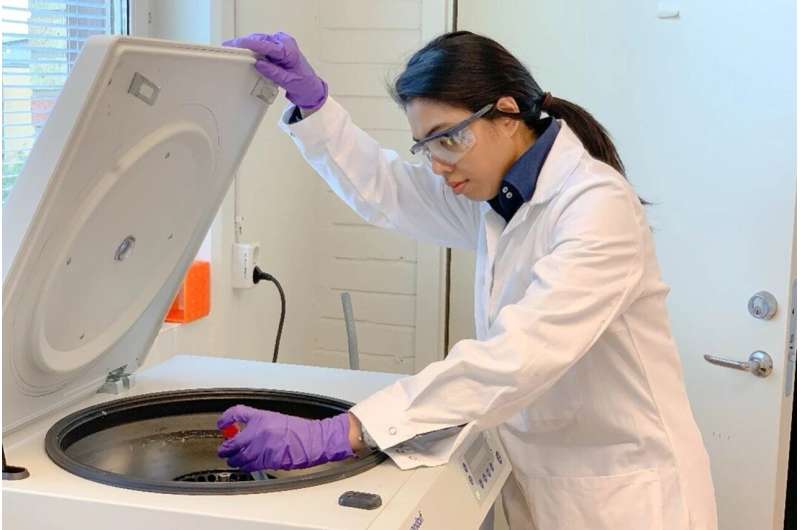This article has been reviewed according to Science X's editorial process and policies. Editors have highlighted the following attributes while ensuring the content's credibility:
fact-checked
trusted source
proofread
Thesis: Non-toxic solvents provide greener production of artificial membranes

Artificial membranes play a vital role in health care, energy storage and resource recovery. However, the fabrication is not environmentally friendly. In a thesis from Umeå University, Norafiqah Ismail in the Department of Chemistry introduces alternative solvents that outperforms traditional toxic ones in terms of cost, sustainability, and performance.
Based on Ismail's groundbreaking research, it is now possible to produce greener artificial membranes thanks to solvents never before used for membrane fabrication.
"These membranes are not yet accessible on the market but have been produced on a laboratory scale," says Ismail.
Artificial membranes have diverse applications. They are used in artificial kidneys and lungs and different kinds of batteries. These adaptable membranes also contribute to energy production in fuel cells, ensure clean water through advanced filtration, and facilitate efficient gas separation—like the separation of carbon dioxide. Moreover, they are a key component in resource recovery.
Health risks of solvents
The membranes can be made from polymers, glass, zeolite, metal, or composite materials. Among these, polymeric membranes dominate due to their affordability, mechanical properties, and ease of production on a large scale.
"Despite their significant contributions to green processes and sustainable development goals, the fabrication of these incredible materials is not environmentally friendly. For instance, the most popular solvent for making membranes, N-methyl pyrrolidone (NMP), can cause reproductive disorders and has been restricted in Europe since May 2020," says Ismail.
Moreover, the other most common solvents, such as dioctyl phthalate (DOP) are identified as a human carcinogen, while dibutyl phthalate (DBP) potentially causes fetal malformation. These harmful solvents not only pose risks to human health but also contribute to environmental harm by generating vast amounts of wastewater during membrane production, which exceeds 50 billion liters annually. Thus, the search for environmentally friendly solvent alternatives holds significant importance.
Benefits society and manufacturers
In her newly published thesis, Ismail employed a life cycle assessment for the first time to evaluate the sustainability of membrane fabrication. Her analysis highlights the toxicity of solvents as the primary hurdle to sustainable membrane production.
Taking a step forward, she introduces three families of solvents that are both cheaper, more sustainable and has better performance than the traditional, toxic ones. These newly developed membranes have been used for a variety of purposes, such as desalination, decontaminating nuclear wastewater, and purifying water. Having safe and easily accessible water plays a crucial role in safeguarding public health.
"This research not only holds societal implications but also bears significance for membrane manufacturers, especially considering the limitations imposed on the use of commonly employed solvents in Europe," says Ismail.
More information: Thesis: Sustainable membrane fabrication using greener solvents
Provided by Umea University





















